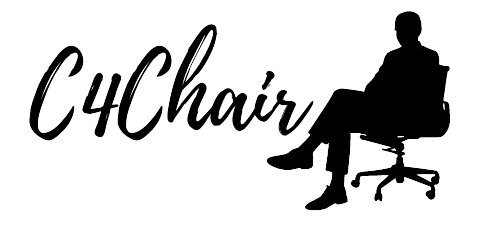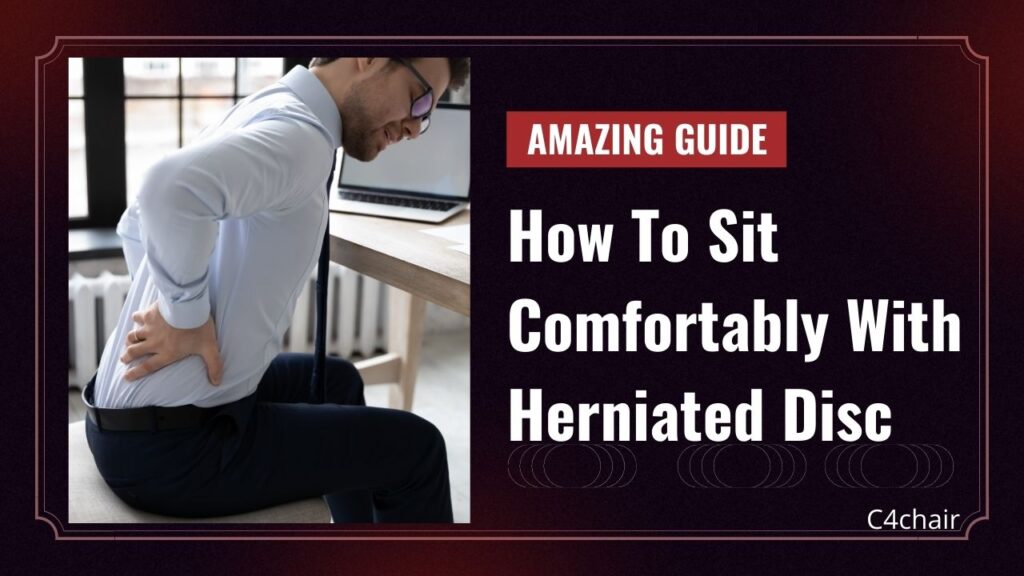A herniated disc is referred to as slipped disc. This disease is related to rubbery cushions or gel-filled discs that lay between the individual bones of the vertebrae. Dislocation or tearing of any one of the rubbery cushions indicates herniated disc disease. It can happen anywhere throughout your spinal column. This slipping out of place result in irritation to the nearby nerves and hence into discomfort and pain. One must learn how to sit comfortably with herniated disc. Because poor sitting can result in undesired consequences.
So to sit comfortably, one must follow the right posture strategy. Your back must be straight against the chair without slouching shoulders. Also, it’s good to maintain the same level of knees and hips. Lastly, try to keep your feet flat on the floor.
Contents
How To Sit Comfortably With Herniated Disc Disease?
The sufferer of this disease cannot sit and sleep in a casual way. Casual postures of sitting and laying will definitely arouse the pain. It is very much important to learn what exercises to avoid with bulging discs. Also seeking guidance about the suitable way to sleep and lay will reduce the pain for sure. That’s why, besides the therapy sessions, it’s very important to learn the correct way to sit with degenerative disc. Specifically, if your job requires long-term sitting. In the below context, you’ll learn some very useful tips about sitting with a herniated disc. Following them will definitely help in relieving pain.
1. Align your spine:
Sitting considerably pressurizes the spinal discs in comparison to standing. So, it’s recommended to sit with proper posture and do not slouch. This will save you from a bulging disc. Let’s learn how to attain good posture while sitting:
- Align your spine with the backrest of the chair. Keeping the back straight is a very supportive gesture for your vertebrae column.
- If you are working on the computer, then it’s better to maintain the level of elbows with the desk. This will help in the proper alignment of hands, shoulders, and wrists.
- Set your knees horizontal to your hips. Never hang your legs. This will put immense pressure on your hips and lower back.
Prolonged sitting is followed by slouching. But if you use the perfect sitting gear, you’ll definitely succeed in maintaining a good posture for a long time. We have some best office chairs for a bad back. All the products will promote healthy posture and furthermore prevent the dislocation of the disc.
2. Support your lower back:
Supporting the lower spine is very much important. This will hence support your entire vertebrae column. For this purpose, use a chair with a built-in and adjustable lumbar support. If the chair doesn’t come equipped with built-in lumbar support, don’t worry! You can also use a cushion to support your lower spine.
So many lumbar cushions are available in the market. Buy one and make it your crime partner while traveling or in the office. Providing adequate support to your lower back definitely reduces discomfort and pain due to slipped herniated discs.
3. Elevate your feet:
You may consider this tip useless. But practicing it will let you enjoy an amazing sitting episode. We recommended above to adjust knees horizontal to your hips. This leads to setting feet flat on the floor. But sometimes, a change in posture becomes a life-saver. Elevating feet higher than hips gives a lot more comfort to hips and lower spine. An individual footrest or a chair with a built-in footrest works best in this regard. So elevate your feet and support your lower body in the best possible way.
4. Don’t sit continuously:
What makes a herniated disc worse even if you follow the above tips to sit with herniated disc? Does sitting make a herniated disc worse? Absolutely not but prolonged sitting does so! So taking frequent breaks is very important. Because the human body is designed to move around. Sitting continuously for longer periods will not only provoke herniated disc pain. But the person may suffer from si joint pain and other lower back and buttock ailments.
Therefore, it’s a recommendation to leave your sitting posture once every 20-30 minutes. Get out of the chair and try some walking or stretching. This practice will surely upgrade your mental and physical health and hence your productivity.
Causes Of Herniated Disc Disease:
Aging is the biggest factor that contributes to herniated disc disease. However, some other reasons also stand behind this complication. For instance, lifting a weighty object also results in undesired effects. In addition, sleeping in an awkward posture can also end in rupture or misplacement of any of the gel-filled discs. As your spine may experience uncomfortable turning and twisting during the process.
Symptoms Of Herniated Disc Disease:
Herniated disc doesn’t always accompany symptoms. With a history of back pain, one can be the victim of this ailment without showing the symptoms. The signs of this disease are, however, weakness, numbness, or pain in the spine, preferably in the lower spine. The sufferer may experience these signs in the cervical spine (neck) also. In some cases, the herniated disc presses the sciatic nerve and causes distress in the thigh back.
Conclusion:
Herniated disc disease is not at all a rare disease. Every individual goes through it at some point in his life. Thus, it’s very important to learn how to sit comfortably with herniated disc. One cannot negate the benefits of sitting correctly. Also, learn how to heal herniated disc quickly and how to get a slipped disc back in place? Amazingly, surgery is not the requirement to deal with herniated disc except for a few cases. Because this problem is very much responsive to physical therapies and medication.

